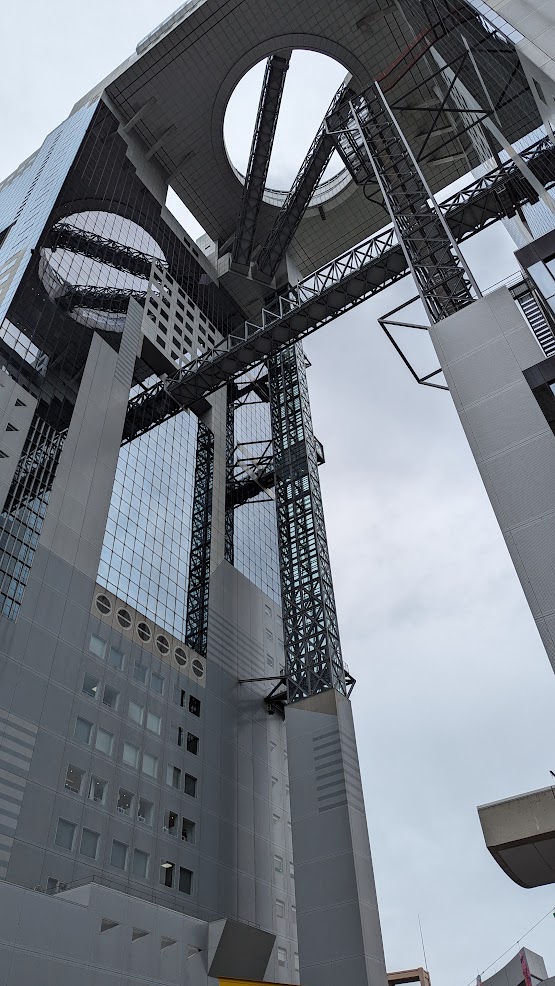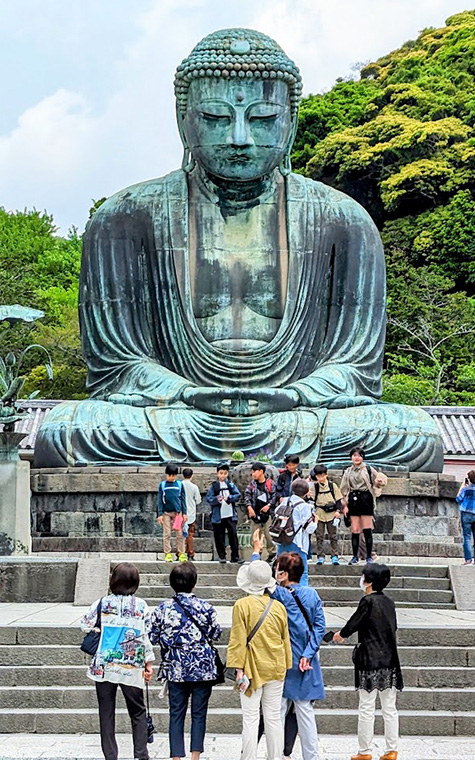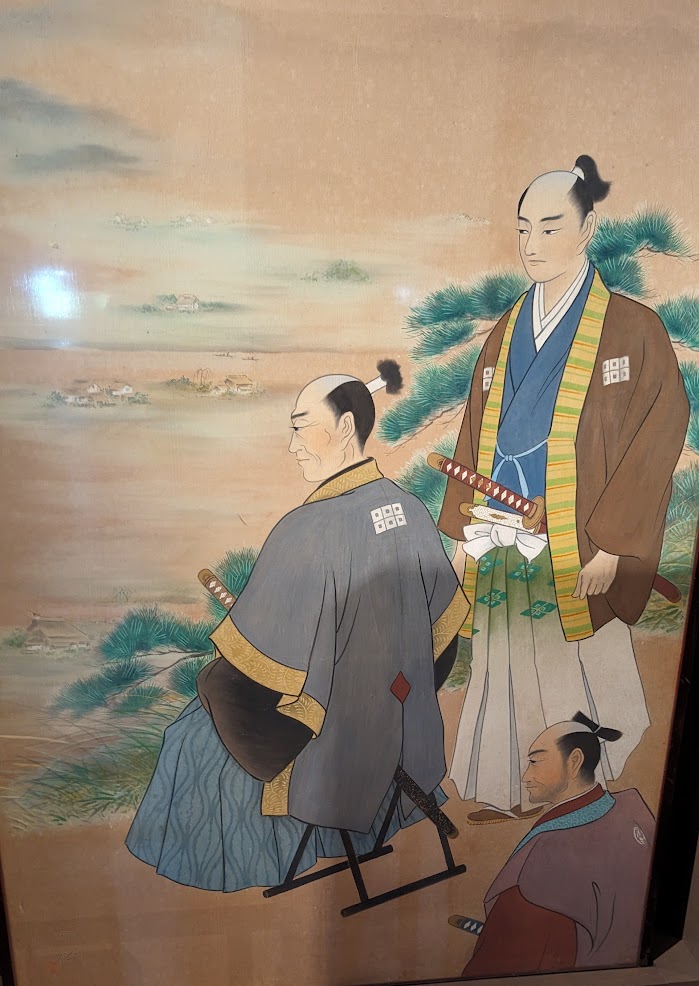
Travel Articles
Japan - Magical Islands of a Thousand Gods
We had flown a day and half from Miami via Los Angeles to Osaka where we were about to begin a twelve-day Tauck cruise among the islands of Japan, followed by a land tour of some of the country’s ancient centers of culture, and ending with a three-night stay in a traditional ryokan within sight of Japan’s sacred mountain, the iconic snow-capped Mount Fuji.
Remembering the James Clavell 1975 best-selling novel Shōgun and fans of the two subsequent TV series, we arrived in Osaka a couple of days ahead of our cruise eager to explore what was Japan’s earliest capital for over a thousand years. Osaka has one of Japan’s most famous landmarks, the reconstruction of Osaka Castle originally built for a powerful Shōgun in 1585. Its classic fortified tower, the massive stone walls and two moats protecting it cover an impressive 15 acres: an awesome testament to the power of the feudal lords of the 16th century.

By contrast, the modern district of Umeda is Osaka’s newer face. Here the twin 40-story towers of the landmark Umeda Sky Building are topped by a “floating garden” observation deck offering panoramic views of the many skyscrapers, hotels and malls surrounding it below.
Here too is the Sumiyoshi-Taisha Grand Shrine, an important Shinto shrine that honors a trio of sea gods. Famous throughout this island nation, it has stood for almost 2,000 years offering spiritual protection for the busy port of Osaka and the hundreds of men and women employed in Japan’s maritime industries or those who come here simply to pray for a safe voyage.
There are two major religions in Japan, Buddhism and Shintoism. Buddhists believe that meditation, spiritual and physical labor, and good behavior are ways to achieve enlightenment, or nirvana. Those who follow Shintoism believe in thousands of deities, sacred spirits they call Kami, that reside everywhere from lofty mountains to tiny grains of rice. Among the many Shinto deities, Amaterasu, the goddess of the Sun, literally “the one that makes the sun shine” is the most revered and is represented in the Japanese flag in the form of a solar disk.
It became clear that understanding these beliefs is essential to understanding the Japanese culture, traditions, and way of life.
At breakfast in our hotel the first morning, we saw a young Japanese couple finish their meal, stand up and bow deeply to their empty table before going on their way. We learned this was a Shinto custom giving thanks to the spirits for their meal as well as those who had prepared and served it.
This respect for the world around them, and the people and animals who inhabit it, is reflected everywhere in the orderliness and cleanliness of Japanese daily life from vast transportation terminals to the smallest bus stop. Walls are free of posters and graffiti, streets are swept clean, displays of flowers can be seen even in spotless, public bathrooms.
There are more than 80,000 Buddhist temples and 100,000 Shinto shrines scattered throughout Japan, usually landscaped among flowerbeds and trees -- cherry, plum, pine, bamboo, and weeping willows -- often beside lakes, ponds, streams, and waterfalls fringed by azaleas, camelia, and bougainvillea.

The Wild Deer of Nara
One of the most visited Buddhist temples features a colossal bronze Buddha that is the largest in the world. It’s in the one-time capital of Nara in a vast wooded park crisscrossed by stone paths and steep staircases, each lined with ubiquitous five-foot high stone lanterns. Each lantern features changeable paper panels on all four sides inscribed with prayerful messages left by worshipers. The park is also famous for its hundreds of wild sika deer, revered as representatives of the gods. Gentle and easily approached, even the deer bow their heads deeply in response to those who bow to them.
The Geishas of Kyoto
Kyoto, another former capital of Japan, is a lovely city on the island of Honshu, known for its many classical Buddhist temples and Shinto shrines, imperial palaces, and gardens. But it is most famous for its historic Gion district, a beautifully photogenic, tightly contained complex of wooden houses and narrow, lantern-lit, cobblestone alleyways frequently traveled by graceful geishas going about their business. Unfortunately, so many camera-toting tourists invaded the district daily, the authorities have closed it to tour groups, respecting the residents’ privacy and to preserve the quintessential setting. This is the price paid for being the fastest-growing travel destination in the world.
It may be a surprise that the land of the rising sun is not one but many islands, four large ones and over 1,400 smaller ones: beautiful, green volcanic islands with hot springs, mountains, crater lakes, and tumbling rivers and streams.
Fish Diet
Naturally in an archipelago of islands surrounded by the sea, fish feature prominently not only in Japan’s long-admired art forms – paintings, sculptures, screens, calligraphy, and kimonos -- but in their diet.
Our cruise took us briefly across the Korean Sea to the port of Busan in South Korea to visit the world-famous Jagalchi Market. Spanning three kilometers on two floors, it’s one of the largest seafood markets in the world.
Like the Japanese, the Koreans like to buy the rich bounty of the sea alive, and often eat their fish raw, flavored with sauces and pickles.
The ground floor of the market was awash with water spilling from rows of side-by-side deep, cold-water tanks stocked with an impressive variety of swimming, crawling, and gasping wonders of the deep.
Upstairs, vendors sold dried seafood and small restaurants prepared seafood favorites for those looking for a quick snack on the run.
Cultured Pearls
The sea is also an important part of cultured pearl production for which Japan is world-renowned. Our cruise took us to the shores of the nutrient rich Uwakai Sea where the oyster hatcheries of Uwajima produce the highest number of pearls in the country.
The oysters are harvested, their shells pried open, and a tiny foreign substance carefully slipped into them by young men and women using skills passed down through as many as three generations. This inserted irritation forces the oyster to protect itself, producing a layer of substance called ‘nacre.’ After anywhere between six months and three years suspended in an offshore hatchery, multiple layers of nacre within the oyster will eventually form a shining pearl. Pearls cultivated in this closely controlled process are prized for their uniform size and quality.
Our cruise also took us to the coastal communities of Hiroshima and Nagasaki both destroyed by atomic bombs in 1945. In both locations, museums display before-and-after videos of the devastated cities, photographs of men, women and children burned and maimed by nuclear radiation, and household artifacts deformed and twisted almost beyond recognition. We were told this gruesome evidence of nuclear war is preserved not only to memorialize the victims of the bombing, but also as a deterrent to encourage future generations to seek world peace. Both museums are found in thoughtfully landscaped Memorial Peace Parks showcasing poignant monumental sculptures donated by various countries of the world.
Brides Hiding Horns
Temples and shrines are important to the Japanese who visit them for many more reasons than simply to pray. At one shrine we saw a young couple introduce their new-born daughter to the gods wrapped in a tiny ceremonial kimono.
Later, we saw a young bride appear before a large family and a Shinto priest dressed in layers of wedding-white kimono. On top of her head, she wore a tall, conical headdress, like a bishop’s miter, ‘hiding her horns” -- symbolic of her marriage vow to never show anger to her husband.
Approach to Shinto shrines is almost always through a ceremonial arch known as a Torii Gate. But the most famous of these cannot be passed through on foot. It’s just off the island of Miyajima reached by a ten-minute ferry ride from the mainland.
It’s very tall, painted crimson, and rises out of a sea often shrouded in mist. Known as the Great Torii Gate, it is one of the holiest sites in Japan. It has World Heritage status and has become a symbol for the whole country.
Best in Japan
The Japanese not only love natural settings, but they also embrace and nurture them. You’ll see evidence of this not only at shrines in plazas and parks but also in hotels and corporate lobbies. But perhaps the most spectacular example of natural settings is seen at the Adachi Museum of Art, located in the coastal town of Yasugi. It boasts gardens voted the best in Japan every year for more than two decades.
Here, a glass-enclosed walkway threads visitors past a series of six skillfully sculptured, picture-perfect landscapes. In each, a combination of stately trees and carefully clipped bushes, sweeping swathes of grass, golden seas of finely raked gravel, and hefty gray boulders placed precisely in and around water features, are blended into natural works of art. Each one a carefully structured statement of peace, harmony and tranquility.
In Tokyo there is a museum called teamLab Planets where long lines of visitors wait to actually “become one with the natural world.” They wade barefoot through water and immerse their entire bodies in the changing light of vast projected garden landscapes.


The Tokaidō Road
During the Edo period and the military dictatorship of the shōguns (1603–1867), the Tokaidō was the most important route in Japan linking the imperial capital of Kyoto with Edo (Tokyo), the seat of the samurai-led Tokugawa Shogunate that ruled Japan.
The shogunate routed the 319-mile long Tokaidō over the mountains of Hakone, where they established the Hakone Checkpoint to regulate the flow of people and weapons into and out of Edo.
In time, teahouses sprung up selling refreshments and light meals to travelers and serving as a base for porters.
A day trip from Tokyo today, Hakone is a mountainous town famed for its spectacular hiking and hot spring resorts. Visitors can hike the Tokaidō, a narrow mountain path lined by enormous, towering pines, and experience the hospitality of a traditional inn known as a ryokan.
Here, guests are provided with traditional Japanese sleeping robes called nemaki, and tatami-matted rooms with outdoor balconies featuring deep wooden tubs fed by steaming hot springs.
Weary travelers can sit and soak in near-boiling water while gazing at a cool mountain landscape crowned by majestic Mt. Fuji.
World-class Art
Hakone is also a major cultural center with ten world-class museums. One is the Hakone Open Air Museum surprisingly exhibiting as many as a 100 works by such masters as Rodin, Miro, and Moore in landscaped gardens.
Another notable museum features the incredible work of contemporary artist Itchiku Kubota. Kubota uses ancient Tsujigahana dyeing techniques to masterfully express the seasonal changing faces of Mt. Fuji in a truly extraordinary series of 80 stunning kimonos. The collection is beautifully showcased in a sublime space he designed and built himself.
A huge variety of wood growing on the Hakone mountain chain has contributed to the community becoming notable also as the only place in Japan producing wooden mosaic artwork. Prized since the Edo period, artisans use different types, colors and textures of wood to create complex patterns most often shaped into beautiful boxes. Some, known as secret boxes, have no apparent opening or top or bottom. They can only be opened if you know the right way to swipe different wooden locks. Some can be opened with four swipes, but masterworks require as many as 75 moves before the box can be opened.
Nature, Peace and Harmony
Perhaps it’s not a surprise that respect of such things as nature, peace, and harmony is at a premium in a densely crowded country of 125 million. High-speed trains speed past on rubber wheels to minimize noise. Visitors respect their surroundings, remove their shoes and pad around silently on stockinged feet. Loud music, car horns, public announcements or any other blaring proclamations seem prohibited.
Convenience and punctuality are also at a premium in Japan. In at least one high-rise in Tokyo, residents can conveniently drive their car directly into the building and right up to their apartment.
Punctuality is exemplified by the famed Shinkansen bullet trains, the fastest and most convenient way of discovering Japan covering an extensive network at a top speed of 200 mph. Passengers waiting to get on or off have exactly 90 seconds to do so before the doors close, allowing the trains to keep to a scrupulously precise timetable.
One last thing: The Japanese love to shop. Narrow streets everywhere and extensive underground malls are packed with colorfully enticing boutiques and tempting sushi bars. Tokyo, of course, boasts the big daddy of them all: the dazzling Ginza district, where one square meter of land is worth over ten million yen ($64,000). It’s a commercial mecca, featuring numerous department stores, world-class brands, upscale boutiques, art galleries, night clubs, and cafés open every day of the week.
All this, of course, creates dozens of special memories; some ancient and sacred, some uplifting and moving, many strange and unfamiliar, but all distinctly rewarding.



